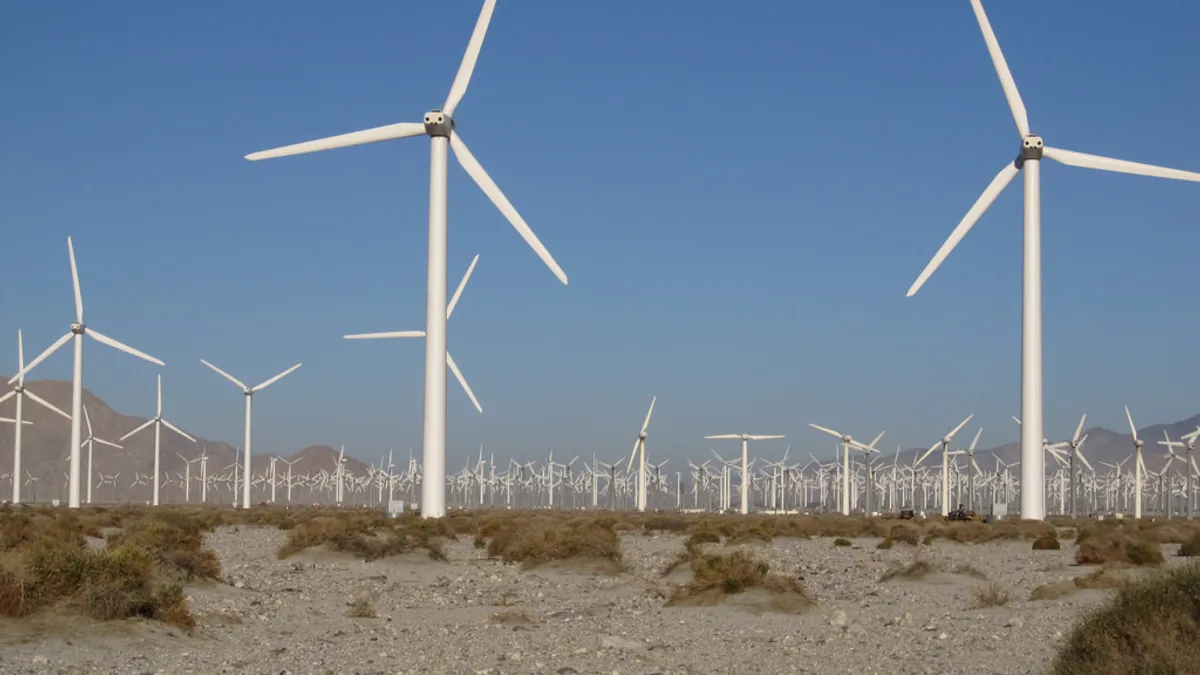Dive Brief:
- Wind generation provided 10.6% of the electricity used by the Electric Reliability Council of Texas (ERCOT), the grid operator for most of the state, in 2014.
- Wind’s share of ERCOT generation grew 70.9% from 2009, when only 6.2% of the state's electricity came from wind. Total electricity generation in Texas increased only 11.3%, according to the U.S. Energy Information Administration.
- The near doubling of Texas wind generation from 18.8 million MWH in 2009 to 36.1 million MWH in 2014 was due to increased installed wind capacity and to completion of the Competitive Renewable Energy Zone (CREZ) transmission expansion that allowed more Panhandle and West Texas wind-generated electricity to get to load centers.
Dive Insight:
Wind’s share of ERCOT electricity is expected to exceed 15% by 2017.
With transmission constraints eliminated, the generation increase from 2009 to 2014 by Texas wind installations grew faster than the wind capacity increase.
Peak production comes largely from March to June and falls off from July to September because the bulk of Texas wind development has been geographically limited to the underpopulated northwestern part of the state.
The geographic limitation of Texas wind results in an average of 40% of the annual wind generation coming between March and June. The wind industry and ERCOT are rectifying that. Developers are building more in the windy Gulf Coast region. To drive that shift, ERCOT increased the capacity value for Gulf Coast wind to 56% and reduced the capacity value of the state's other wind to 12%.
Counterintuitively, ERCOT data shows conventional power plant reserves, at 76 cents per monthly electric bill, cost some 17 times higher than the 4 cents per monthly electric bill cost for wind back-up, according to a wind industry trade group. The cost per MWH for wind back-up is about half the cost per MWH of reserves for conventional generation.














